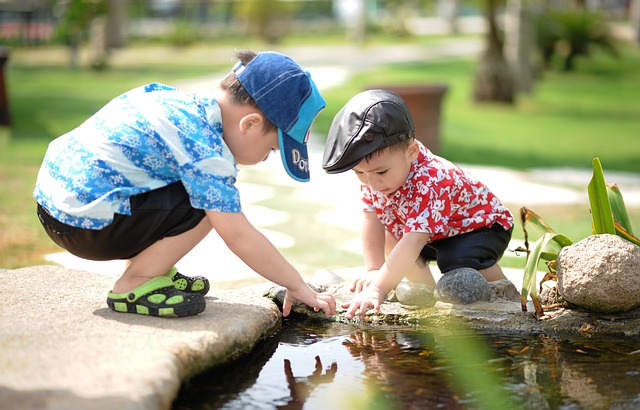Child advocacy programs, driven by collaboration between child welfare services and juvenile legal advocacy groups, are vital in safeguarding and promoting the well-being of all children. These initiatives provide support for vulnerable children in legal settings, ensure their rights are upheld, and foster development while prioritizing safety in proceedings. They also focus on preventing abuse and neglect, offering counseling and education to protect child education rights and nurture young minds. By integrating professionals like social workers and psychologists, these programs create safe environments, explain legal processes, and promote positive outcomes for minors across educational and legal domains, ultimately aiming to prevent child abuse and ensure every child's right to a supportive ecosystem.
In today’s complex social landscape, safeguarding children’s rights within legal and educational spheres is paramount. This article delves into the multifaceted approach to protect our youngest members, exploring critical components such as child advocacy programs in legal settings, fostering child development through prevention of abuse, and ensuring vulnerable children’s access to quality education and mental health support.
We’ll navigate the intricate web of child welfare services, juvenile justice, and educational rights, highlighting strategies for professionals and caregivers alike to create a safer, more supportive environment for all children.
The Role of Child Advocacy Programs in Legal Settings
Child advocacy programs play a pivotal role in safeguarding children’s rights within legal settings. These initiatives, often spearheaded by dedicated organizations and professionals, focus on promoting and protecting the best interests of young individuals involved in the justice system. By providing legal representation and support for vulnerable children, these programs ensure that their voices are heard and their rights are upheld. Child advocacy groups work tirelessly to prevent child abuse and neglect, offering crucial services such as counseling, education, and advocacy for those affected by these issues.
In legal proceedings, especially involving juvenile cases, child advocacy organizations collaborate with child welfare services to foster a child’s development while ensuring their safety. They offer specialized knowledge and resources to help navigate complex legal systems, ultimately advocating for just outcomes. Moreover, these programs aim to educate both children and adults about the significance of protecting children’s education rights, thereby fostering an environment that nurtures young minds and prepares them for a bright future.
– Understanding child advocacy and its legal framework
Child advocacy is a multifaceted approach designed to safeguard and promote the well-being and rights of children. It involves a robust legal framework that encompasses various entities, including child welfare services and juvenile legal advocacy groups. These programs work tirelessly to ensure that every child receives the support they need, especially those who are vulnerable or have experienced trauma. By fostering child development and implementing measures to prevent child abuse, these initiatives play a pivotal role in shaping a safer and more nurturing environment.
The legal underpinnings of child advocacy are rooted in the belief that children deserve special protection due to their developmental stage and inherent vulnerability. This is reflected in laws and policies that prioritize ensuring child safety and education rights. Organizations dedicated to child welfare services often collaborate with educational institutions to foster inclusive practices, ensure equal opportunities, and address any barriers that might hinder a child’s right to education. Such collaborative efforts are instrumental in creating a supportive ecosystem where children can thrive.
– Strategies for protecting children's rights in court proceedings
Protecting children’s rights in court proceedings requires a multi-faceted approach that leverages specialized child advocacy programs and child welfare services. These initiatives ensure that young individuals, often vulnerable and traumatized, receive comprehensive support for vulnerable children throughout legal processes. By integrating professionals such as social workers, psychologists, and lawyers who specialize in juvenile legal advocacy, the system aims to balance justice with the unique needs of minors.
Strategic interventions include providing children with a safe and supportive environment during court appearances, offering age-appropriate explanations of legal proceedings, and encouraging open communication. Moreover, focusing on fostering child development and child education rights helps address long-term challenges faced by abused or neglected children. This holistic approach, coupled with robust child abuse prevention measures, ultimately contributes to ensuring child safety and promoting their overall well-being within legal and educational settings.
– Collaboration between legal professionals and child advocates
Collaboration between legal professionals and child advocates plays a pivotal role in protecting children’s rights within legal and educational contexts. Legal experts, armed with knowledge of the law, work alongside dedicated child advocates who possess deep understanding of childhood development and the unique needs of vulnerable populations. This partnership ensures that cases involving minors are handled with the utmost care and sensitivity. By combining their expertise, they can effectively navigate complex systems, such as child welfare services and juvenile legal advocacy, to foster positive outcomes for children.
Through collaborative efforts, these professionals advocate for support for vulnerable children, ensuring their access to quality education and safety in learning environments. They strive to prevent instances of child abuse and promote fostering child development by addressing systemic issues that may hinder a child’s growth. Their joint work also involves raising awareness about the importance of recognizing and reporting potential cases of child abuse or neglect, thereby creating a safer and more nurturing ecosystem for children within legal and educational settings.
Protecting children’s rights is a multifaceted endeavor that requires the collective effort of legal professionals, child advocates, and welfare services. By implementing strategies that prioritize child welfare and development, we can create a safer, more supportive environment in both legal settings and educational institutions. Child advocacy programs play a vital role in ensuring that vulnerable children receive the necessary support and representation, fostering not just their safety but also their holistic growth. It is through collaboration and a deep understanding of the legal framework that we can navigate complex cases effectively, ultimately upholding the rights of our youngest members in society.
